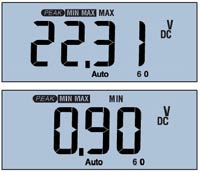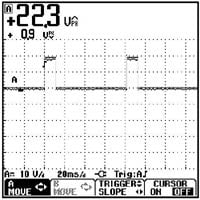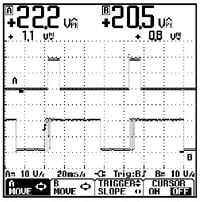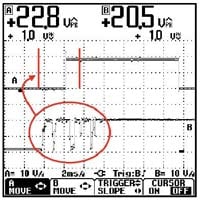The digital multimeter is the mainstay of electrical troubleshooting and the tool that most of us reach for first. In Beyond the Multimeter, we look at five examples of how reaching for an oscilloscope next can make troubleshooting faster, easier, and more effective.

Part 4 describes troubleshooting the erratic operation of a conveyor system, using a digital multimeter and an oscilloscope. As process speeds increase, timing and signal transitions become more critical for reliable operations, and keeping switches operating reliably becomes a high priority.
Proximity switches
Proximity switches (see Figure 1) are common in factories and process plants where they are used to control the position and flow of goods through the manufacturing process.
There are three types of proximity switches:
- Optical switches - activated when an object breaks an beam of light
- Magnetic switches - use a magnetic field to make or break a contact
- Mechanical switches - activated by physical contact with an object
Mechanical switch contacts deteriorate over time. They are subject to mechanical wear, and arcing can cause pitting of the contact surfaces. Usually, these problems arise slowly and gradually worsen before the switch fails completely. Troubleshooting a mechanical switch that has failed completely - a "hard fault" - can often be done with just a visual inspection or with simple measurements made with a digital multimeter. It's the gradual or intermittent switch failures that usually cause headaches.

Troubleshooting with a digital multimeter
In this example, a failing mechanical proximity switch is causing erratic operation in a conveyor system.
When a multimeter is connected to the output of the conveyor belt controller (which receives its input from the proximity switch), the "Voltage Peak Max" and "Voltage Peak Min" readings show that the switch is turning on and off as expected (see Figure 2).
A digital multimeter with frequency measurement can also reveal the rate at which the switch is changing state (see Figure 3).

None of this information, however, is helping to diagnose the problem.
At this point, we could swap out the controller and hope for the best, or we can dig a little deeper.
Troubleshooting with an oscilloscope
A modern digital oscilloscope can give you a lot of the same numerical information as a digital multimeter, including the pulse voltage and frequency information shown above. But with an oscilloscope, you can examine signal information visually as well. That enables you to see switch on/off state timing and time relationships between a source and output signal (the switch and the controller output in the example shown in the following example).



When the oscilloscope is connected to the output of the controller, it reveals nothing out of the ordinary about the controller output pulses. The pulse waveforms are well-formed and free from electrical "noise." (Figure 4)
What about timing? Next we connect the oscilloscope so it captures the signals from the proximity switch on first channel and the output pulse from the controller on the second channel (Figure 5). When we examine the result, it's immediately clear that something is wrong. The bottom trace (the output from the proximity switch) is not stable in relation to the top trace (the controller output).
An oscilloscope displays varying voltages as a line (called a "trace") that sweeps from left to right across the screen. If this line is drawn faster (that is, if we increase the oscilloscope's sweep speed), we can see a more detailed view of how the voltage is changing moment by moment (or millisecond by millisecond).
"Zooming in" on the signals in this way (Figure 6) reveals that the output from the proximity switch (lower trace) isn't changing from off to on in a single transition (red circle). Instead, faulty switch contacts are bouncing on and off for about five milliseconds before the output stabilizes. The controller is unable read this jagged voltage correctly, so its output varies broadly (over the time range shown by the red bars in the top trace). That's what's causing the erratic behavior.
The bottom line
A digital multimeter can show precise amplitude and time measurements, and can show when a switch fails to open or close, but when it comes to subtle or intermittent events, an oscilloscope can give you the additional information you need to diagnose the problem. A picture really is worth a thousand words!
- Beyond the Multimeter, Part 1: Troubleshooting a Variable Frequency Drive with a Multimeter and an Oscilloscope
- Beyond the Multimeter, Part 2: Using a Multimeter and an Oscilloscope to Troubleshoot Transient Voltages in Variable Frequency Drive Output
- Beyond the Multimeter, Part 3: Troubleshooting a Rotary Encoder with a Multimeter and an Oscilloscope
- Beyond the Multimeter, Part 5: Troubleshooting a DC Power Supply with a Multimeter and an Oscilloscope